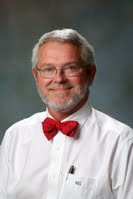Spring has Sprung
What a dreadful winter! I had the highest electric bill ever seen on the planet, then my heat pump went the way of all flesh, and the local weather systems kept the experts guessing about school closures. Adios and good riddance!
“Spring has sprung, the grass is riz. I wonder where the flowers is.”
That catchy little rhyme, often wrongly attributed to Ogden Nash or e.e. cummings or a songwriter from the 50’s, has some variety in its verbiage. (“ . . . wonder where dem boidies is”). But no matter, we are just glad that spring has sprung.
Spring is an astronomical event. Unlike Thanksgiving or Memorial Day, no one gets to vote on it. It’s not an invented date (like Christmas), it’s an observed natural cycle. Some students even learn about it in their schools.
The vernal equinox usually occurs on March 20, as it did this year. Because this day of “equal night” (at the equator we find 12 hours of darkness and 12 hours of light) depends on the earth’s rotation, we sometimes have March 21 as the equinox. Hipparchus, a Greek mathematician, was the first to record this observation. He noted that the same thing happens six months later as well! That’s the autumnal equinox, the beginning of fall.
The last time March 21 was the first day of spring was back in 2007. Before that it was 2003. But before that it was 1987. The actual date cannot be fixed by using a simple number-of-days formula. The earth wobbles. The actual date for the equinox must be calculated according to formulas that take the wobble into account. The same thing is true for calculating the autumnal equinox.
Is any of this interesting stuff? Could a lesson plan be devised for math, or history, or English, or science that was built around this event? Of course! And how much fun would it be to take a naturally occurring event, explore it deeply, and accomplish a curricular goal?
Hipparchus, Julius Caesar, Pope Gregory XIII all weighed in on the subject. Leap years have to be considered. And is there any practical application to studying this? (Geostationary satellites, those that maintain a position above a fixed point on earth, are sometimes disrupted near the equinoxes. How about that, cell phone users?).
The next time our beloved spring occurs on March 21 will be in the year 2044 according my calculations. But then again, I’m using Greenwich Mean Time. You might want to subtract 5 hours for us. Lesson plans!













